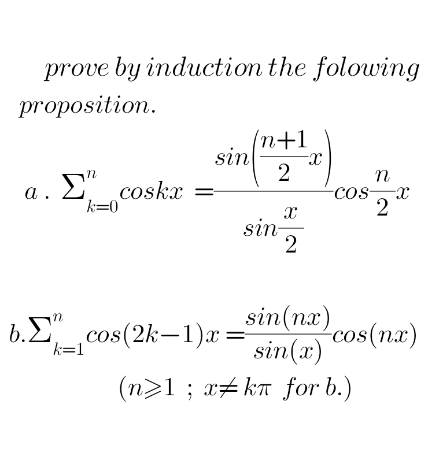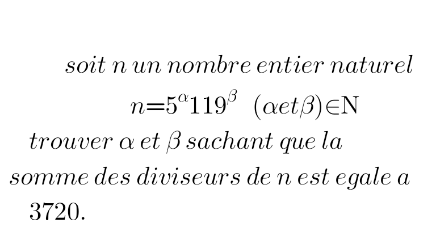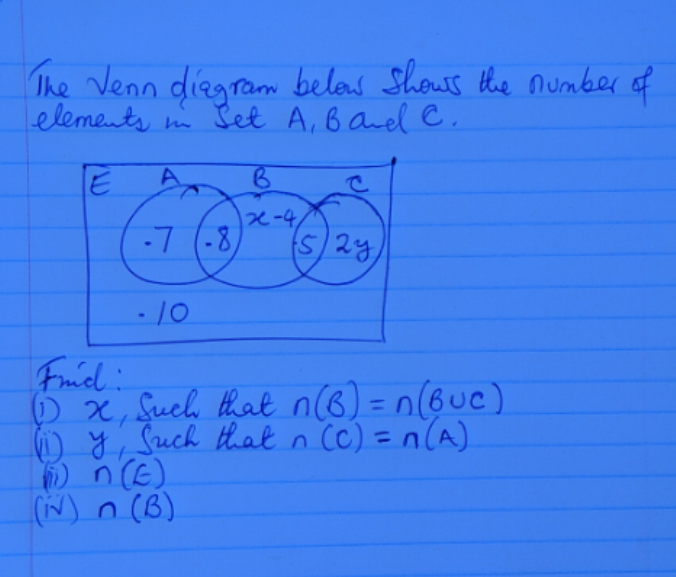
|
|

|
All Questions Topic List |
Set TheoryQuestion and Answers: Page 3 |
Question Number 164085 Answers: 0 Comments: 0
|

|
Question Number 163939 Answers: 0 Comments: 0
|
| An old unsolved question#1132
let S={1,2,3,4,5}, if A,B,C is such that
A∩B∩C=∅
A∩B≠∅
A∩C≠∅
how many ways can be choose A,B and
C
|
|
Question Number 163735 Answers: 0 Comments: 1
|

|
Question Number 163435 Answers: 1 Comments: 0
|

|
Question Number 163161 Answers: 1 Comments: 0
|

|
Question Number 161623 Answers: 2 Comments: 0
|
| Σ_(n=1) ^∞ (((−1)^(n+1) )/(n(n+2)))=?
|
|
Question Number 161439 Answers: 0 Comments: 1
|

|
Question Number 158522 Answers: 1 Comments: 0
|
| Σ_(n=2) ^∞ (((ζ(n)−n))/2^n )=?
|
|
Question Number 155277 Answers: 2 Comments: 0
|

|
Question Number 154544 Answers: 0 Comments: 0
|
| determinant (((prove that)),((Σ_(n=1) ^∞ ((H_n H_n ^((2)) )/n^3 )+Σ_(n=1) ^∞ ((H_n H_n ^((3)) )/n^2 )=((21)/8)𝛇(6)+𝛇^2 (3))))
by Math.Amin 11.fb.96
|
|
Question Number 148397 Answers: 0 Comments: 0
|

|
Question Number 144639 Answers: 0 Comments: 0
|

|
Question Number 141997 Answers: 2 Comments: 0
|
| find two irrational numbers
between 0.333.... and 0.444...
|
|
Question Number 141574 Answers: 0 Comments: 0
|

|
Question Number 137689 Answers: 0 Comments: 0
|

|
Question Number 137626 Answers: 0 Comments: 0
|

|
Question Number 137625 Answers: 0 Comments: 0
|

|
Question Number 137014 Answers: 0 Comments: 2
|

|
Question Number 135634 Answers: 1 Comments: 0
|

|
Question Number 133949 Answers: 0 Comments: 0
|

|
Question Number 133419 Answers: 0 Comments: 0
|
| Prove the set {1,2,3,...,1989}
can be expressed as the disjoint
union of A_1 ,A_2 ,...,A_(117) such that
(i) each A_i contains the same number of elements ,and
(ii) the sum of all elements of each A_i is
the same for i=1,2,3,...,m
|
|
Question Number 131164 Answers: 0 Comments: 0
|

|
Question Number 129634 Answers: 1 Comments: 0
|
| sin^ x+cos^ x=1 proof by step by step or by showing all steps
b/c it is my assignment
|
|
Question Number 128246 Answers: 0 Comments: 0
|
| ...nice calculus...
suppose that :: m=((4^p −1)/3) , where
p is a prime number and p>3.
prove that :::
2^(m−1) ≡^m 1 ...?
|
|
Question Number 127165 Answers: 0 Comments: 0
|

|
Question Number 126808 Answers: 2 Comments: 0
|

|
Pg 1
Pg 2
Pg 3
Pg 4
Pg 5
Pg 6
Pg 7
|
Terms of Service |
Privacy Policy |
Contact: info@tinkutara.com |




































